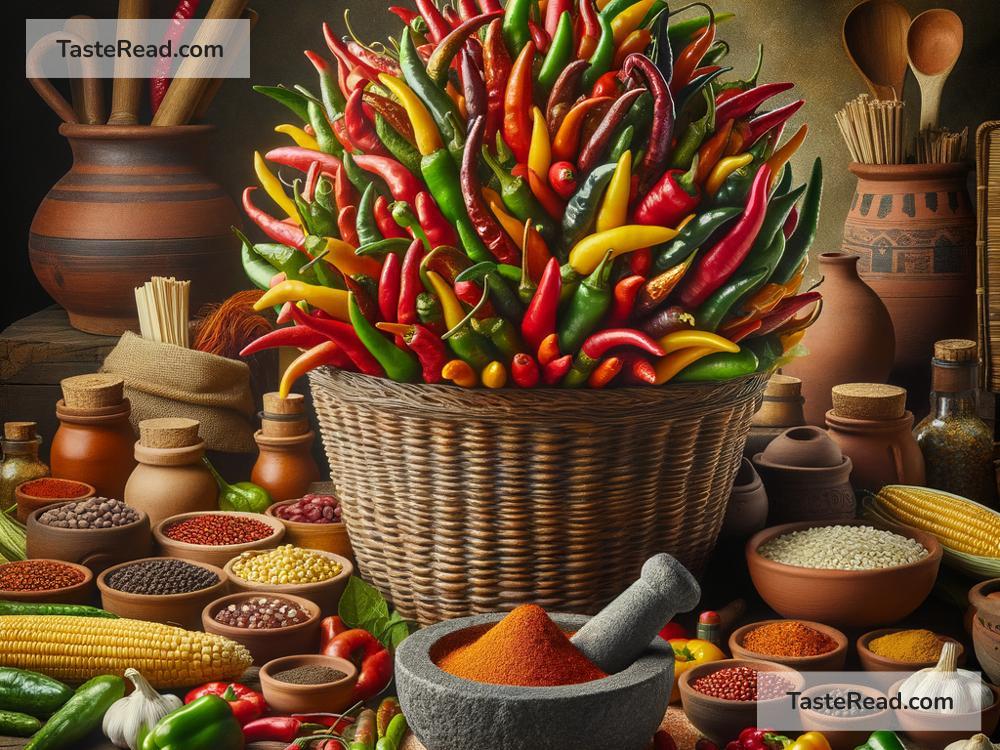The Fascinating History of Chili Peppers in South American Cuisine
Chili peppers are among the most flavorful and iconic ingredients in South American cuisine. For centuries, these fiery little fruits have spiced up dishes and added unique character to meals across the continent. But their story is not just about taste—it’s also about culture, trade, and the rich history of the people who cultivated them.
Where Chili Peppers Began
Chili peppers are native to South America. Scientists believe they started growing in the wild more than 7,000 years ago in regions that are now Bolivia and southern Brazil. Indigenous people noticed their bold flavors and began farming them. They used chili peppers not only to flavor food but also for medicine and rituals.
By the time ancient civilizations like the Inca, Maya, and Aztec rose to power, chili peppers were a key part of daily life. They became so important that chili peppers were even used in religious ceremonies and were seen by some groups as gifts from the gods.
How Chili Peppers Spread Across the World
The history of chili peppers took a big turn in the late 1400s and early 1500s, when explorers from Europe arrived in South America. Christopher Columbus and other adventurers were amazed by the rich variety of foods grown by the locals. They took chili peppers back to Europe, where people were fascinated by their fiery taste.
From Europe, chili peppers spread quickly across the globe. They traveled to Africa, Asia, and beyond through trade routes. Today, people in India, China, Thailand, Nigeria, and many other countries cook with chili peppers. It’s incredible to think that a tiny fruit from South America changed the flavors of cuisines worldwide.
The Role of Chili Peppers in South American Cuisine
While chili peppers have traveled far from their South American roots, they remain deeply connected to the region’s food and culture. Each country in South America has its own unique way of using chili peppers in traditional dishes.
In Peru, for example, several types of chili peppers are key ingredients in recipes. Peruvian cuisine often uses ají amarillo, a bright yellow chili pepper with a mild heat and fruity flavor. This chili is a must-have in dishes like ají de gallina (a creamy chicken stew) and ceviche (raw fish marinated in lime juice).
Meanwhile, in Bolivia, locoto is the chili of choice. Locoto is hotter than ají amarillo and is often added to spicy sauces. Chilean cuisine features ají cacho de cabra, which has a smoky flavor that pairs beautifully with meats and stews.
In Mexico, which is part of North America but heavily influenced by South American traditions, chili peppers like habanero, poblano, and chipotle are key players. Mexican cuisine has helped popularize chili peppers globally through dishes like tacos, enchiladas, and mole sauce.
Why Chili Peppers Are More Than Just Food
Throughout history, chili peppers have served a purpose beyond just tasting good. For Indigenous South American groups, chili peppers symbolized strength and protection. Some tribes used chili peppers in spiritual ceremonies and medicine. They believed the heat of the chili could ward off evil spirits and heal illnesses.
Even today, chili peppers continue to be celebrated in South America. Festivals honoring chili peppers take place in many countries, where farmers showcase their varieties, chefs create spicy dishes, and people gather to share their love of this powerful ingredient.
Chili peppers are also culturally significant because they represent resilience. They can grow in tough conditions, like hot, dry climates or poor soil. This ability to thrive despite challenges mirrors the strength and adaptability of the people who farm them.
The Science Behind the Heat
Have you ever wondered why chili peppers are spicy? The heat comes from a chemical called capsaicin, which is found in the seeds and inner parts of the chili. Capsaicin tricks your brain into feeling a burning sensation, even though there’s no real heat involved. For some people, eating spicy food releases endorphins, the body’s “feel-good” chemicals. That’s why many people love the thrill of eating chili peppers.
Interestingly, capsaicin has health benefits. It can boost your metabolism, reduce inflammation, and improve circulation. Indigenous South American people recognized these benefits long before modern science confirmed them.
Preserving a Culinary Legacy
The fascinating history of chili peppers in South American cuisine reminds us of how food connects us to our ancestors and the environment. Local farmers continue to grow heirloom chili peppers, preserving ancient varieties that are packed with flavor and history.
As the world becomes more interconnected, South American chili peppers remain a global treasure. The next time you bite into a spicy dish, think about the journey of that chili pepper—starting as a wild plant in the forests of South America, cultivated with care by Indigenous farmers, and eventually finding its way to tables all over the world.
Chili peppers are more than just an ingredient. They carry stories of exploration, tradition, and innovation. They bring people together in a shared love for spicy flavors and remind us of the rich cultural heritage of South America. And that’s truly fascinating.


